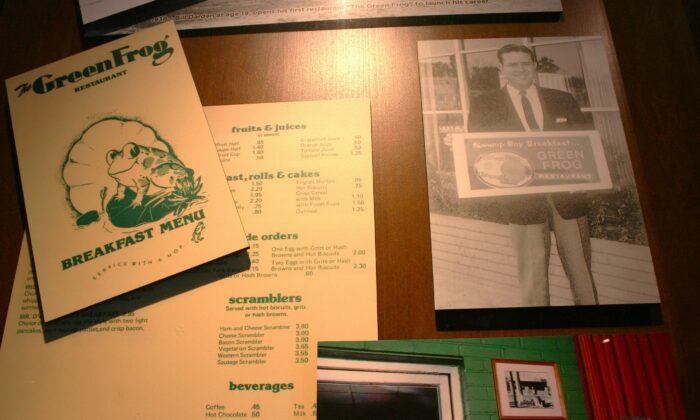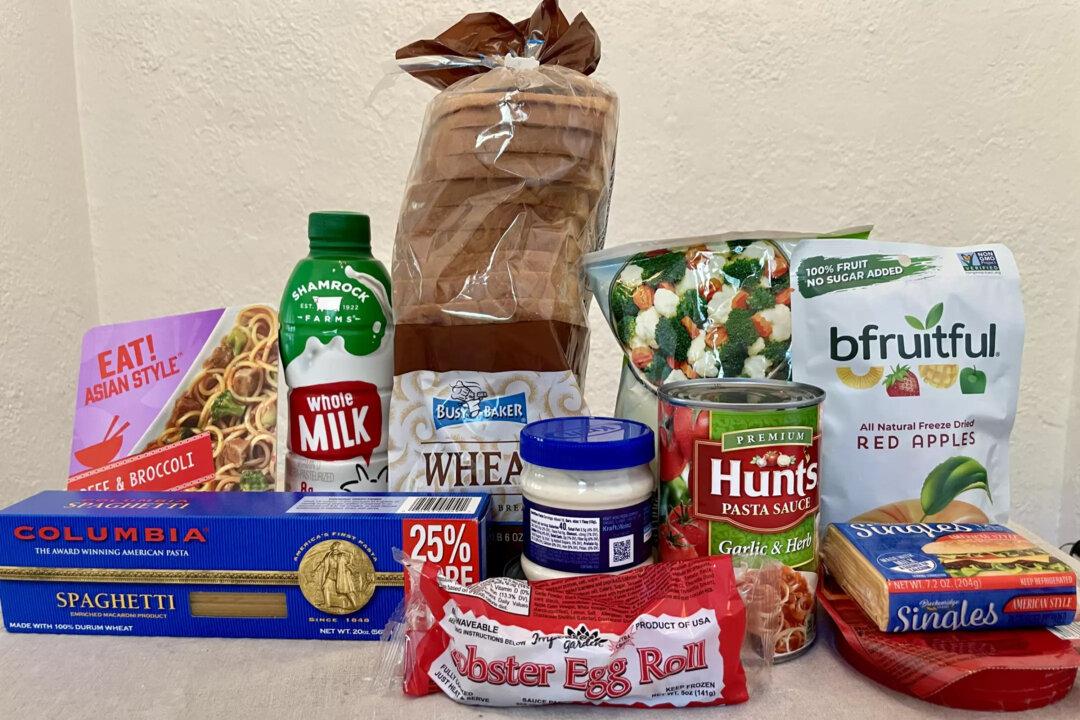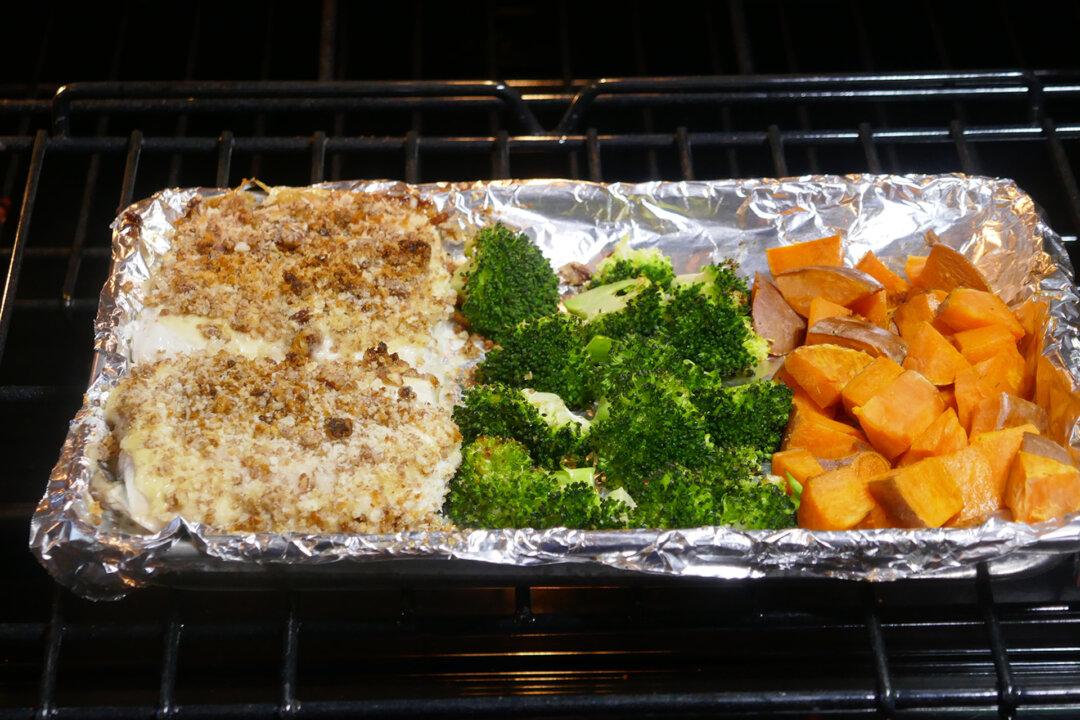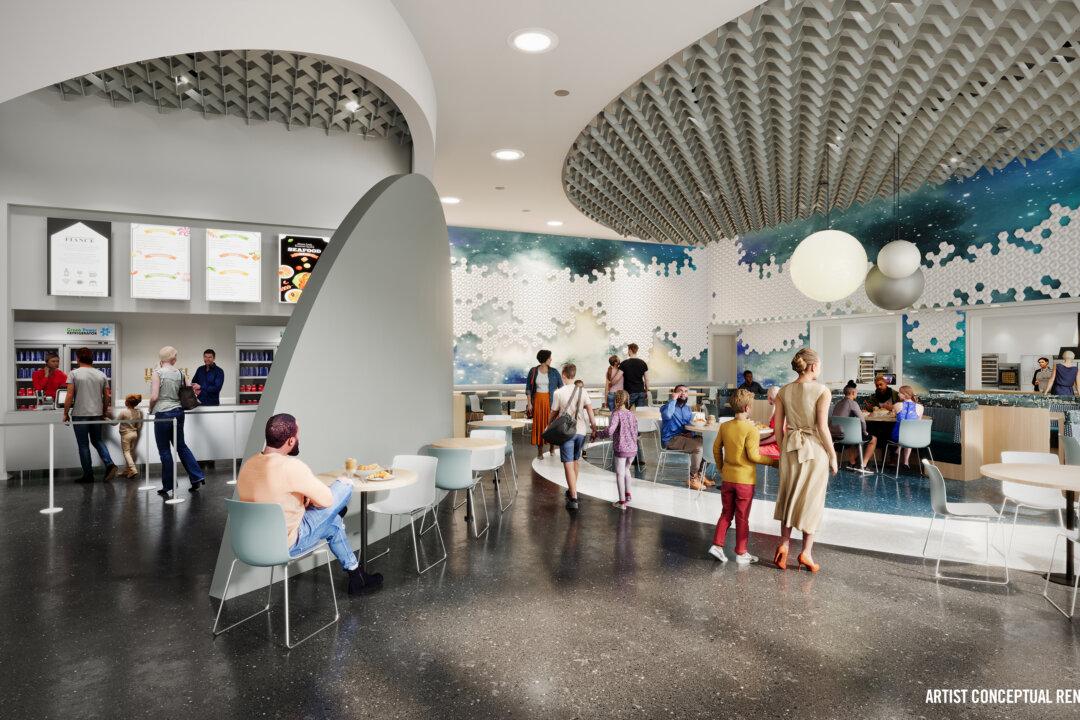By Mary Ann Anderson From Tribune News Service
At some time or another, you’ve probably been on a date at Red Lobster. Maybe it was your first date long ago or your last one over the weekend. Red Lobster can be romantic. The presentation is always nice, the seafood delectable, and those scrumptious signature biscuits glisten with butter and aromatically ooze with garlic. As long as you both have a biscuit, the garlic cancels itself out, so you can smooch all you want after dinner.
Next time you and your significant other crave Red Lobster, you can thank a Green Frog from Waycross, down near the Okefenokee Swamp in the southern reaches of Georgia. August 1938 was hot and humid when William B. “Bill” Darden opened the Green Frog, a luncheonette in downtown Waycross, right beside an ever-humming railroad. The small restaurant had 10 stools and two booths totaling only 25 seats, plus the addition of a drive-up window. Before it closed in 1981, it had leaped from luncheonette to a lovely fine dining 200-seat restaurant.
How did a Green Frog metamorphose into a Red Lobster? Armed with the invaluable assistance of Waycross historian, writer and dear friend, the late Robert Latimer Hurst, and with a plethora of information supplied by Darden Corp., who at one time owned Red Lobster, I jumped at the opportunity to delve into the iconic business’s history.
The story begins in 1918 when Darden was born in White Plains, Georgia, the son of farmers and one of seven children. After graduating from Georgia Military College High School in Milledgeville, Darden moved to Waycross in 1935 to assist his two brothers in running a grocery business. For the next three years, he sold fish sandwiches for a nickel each at the train yards. Waycross was then and today remains a hotbed of rail activity, and the popular anecdote is that it is named for “where the ways cross.”
In 1938, the entrepreneurial Darden, a young tadpole at only 19 years old, opened the Green Frog along with his brother Denham, whimsically offering “Service with a Hop.”
“Five-cent Cokes and 15-cent sandwiches called to those early patrons, who, at the time, were more interested in reading about Adolph Hitler’s rampaging through Europe than a small drive-in opening,” Hurst said. “Three years later, the Japanese would bomb Pearl Harbor. With the changing of the world and with Waycross and the surrounding area becoming very military-conscious, that little sandwich stand took on a greater importance. It was not only a place to eat but a place to share with friends the latest news.”
Both Darden brothers served in the military during World War II. Bill Darden spent three years in the Army, primarily stationed in the Pacific. While the brothers were at war, their other brother, John, continued to run the restaurant. After Bill came home, he wed Mary Green, to whom he was married until his death in 1994. The restaurant continued to thrive.
Racial segregation and discrimination were still a part of the landscape of the South at the time, even in Waycross, where it was unheard of for Blacks to share public buildings such as restaurants with whites. But the trailblazing Darden would have no part of it and courageously welcomed everyone as a guest in his luncheonette.
“These were the days when Glenn Miller and Tommy Dorsey commanded the jukeboxes, and the restaurant capitalized on softer music to be played by an early stereo system that even reached outside to the famed bamboo parking lot,” reminisces Hurst. “People began parking on the northeast side of the building inside the bamboo ‘stalls’ that had gained the nickname ‘giggle bushes.’ It was a courting paradise, and the Green Frog hosted many a romance.”
The 1950s were a busy time of leaps and hops for Darden. Traveling by automobile became easier and more prevalent, which brought fast food, roadside motels and the interstate system. Darden became involved in the opening of several Howard Johnson’s, Bonanza Steakhouse and Kentucky Fried Chicken franchises in the Carolinas and Georgia.
The Green Frog’s popularity puffed like a bullfrog. Bill and Mary Darden’s sons, Jett, Bill, and Matt jointed the family business. As Hurst noted, “Expansion brought the little drive-in stand to a post-World War II restaurant, with a new emphasis being placed on coffee lovers in the morning, a lunchtime luncheon room for the noon and evening dining for the night. It became the location for that first date, that dinner before the senior prom, that get-together after church, and just friends enjoying a banana split. Its reputation had now reached all the neighboring towns, and visitors poured in to eat at the Green Frog.”
By the 1960s Darden owned 25 restaurants, but inspired by the success of Gary’s Duck Inn, an Orlando, Florida, seafood restaurant that he bought with partners, he began to forge plans for his own brand of seafood restaurants that would emphasize fast service and affordable prices combined with quality.
Darden opened the first Red Lobster in 1968 in Lakeland, in Florida’s heartland, along with Joe Lee, a Blackshear, Georgia, native who worked for and learned the business from Darden. With the restaurant nearly up and running, Darden and Lee still hadn’t come up with a name for the new venture, but agreed it needed to be zingy and catchy. According to lore that may or may not be true, a local printer had the menu all typeset but couldn’t start the presses until the two made a decision of what to call the restaurant. “You’ve had success before with a colorful critter like the Green Frog,” the printer had supposedly said. “Why don’t you call it the Red Lobster?”
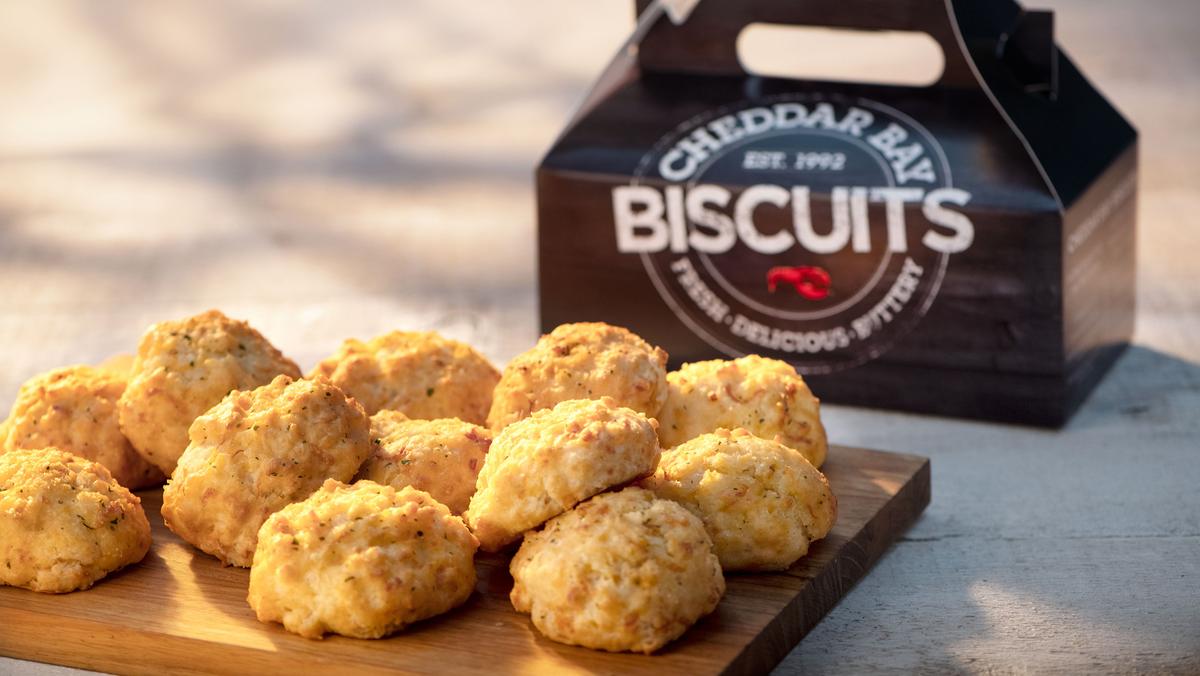
The restaurant then became known as the Red Lobster Inn, but at an early point the word “Inn” was dropped. Such a success was that first restaurant that Darden had to expand it just weeks later to accommodate the crowds. Lee had once joked, “Our biggest competition back then was the kitchen stove.”
In 1970, Red Lobster caught the attention of General Mills, who bought out the restaurant and expanded coast to coast. Darden continued to run the restaurants until his retirement in 1983. He passed away in 1994.
And the Green Frog? Hurst summed it up, “For that younger set, the Frog’s Grog and the Lily Pad, lounges that were added to the restaurant, opened their doors, changing the traditional view concerning social drinking in this Bible Belt community. Old ways fell by the wayside. So after 43 years, it closed, but its reputation from that little street stand to a really fine restaurant was known far and wide.”
The Green Frog may have croaked for the last time, but not Red Lobster. Now independently owned, more than 700 Red Lobster restaurants dot the globe. When it’s date night again, hop on over to Red Lobster for great seafood served with a touch of nostalgia.

